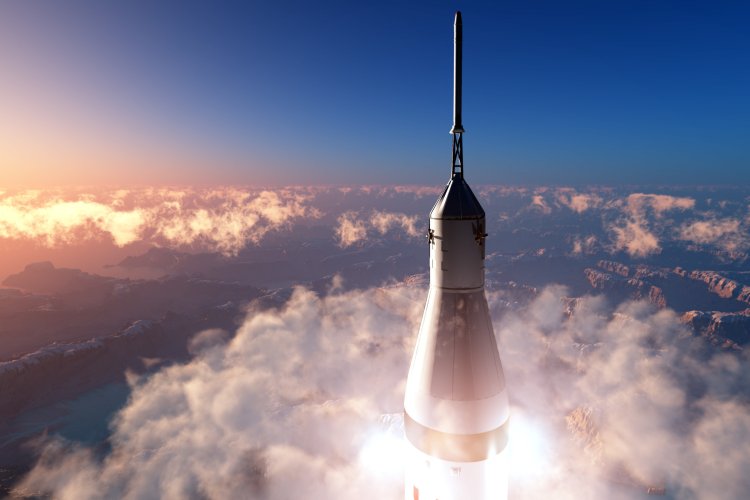It requires enormous fuel costs to get off the ground and gain enough speed to enter orbit. For example, the dry mass of the Soyuz rocket (mass excluding fuel) is slightly more than thirty-three and a half tons. But at launch, the total mass of the rocket – almost 308 tons – only eleven percent of the total mass goes into space with a payload. More than 270 tons of fuel are being burned so that the Soyuz overcomes gravity.
Read in this Scientific Russia article about the types of rocket propellants that are used today, and about promising developments.
Solid propellants
Today, gunpowder is used mainly in firecrackers, fireworks, and other pyrotechnic products, but initially, it was the first rocket propellant. Gunpowder is one of the four great Chinese inventions: according to some data, a mixture of saltpeter, charcoal, and sulfur was used in rockets back in the second century AD.
Solid rocket fuel is a substance or mixture of substances that can burn without access to oxygen while releasing a lot of gas. Among the advantages of solid-propellant engines are the relative ease of manufacture and use, the absence of problems with leaks of toxic substances, reliability, and the possibility of long-term storage of fuel. The disadvantages of such engines are a low specific impulse, difficulties in controlling the thrust of the engine and its restart, a high level of vibration during operation. Due to the shortcomings of solid-fuel engines, it was liquid-propellant rockets that flew into space first, although solid fuel mixtures were invented earlier.
Solid rocket boosters were used for launching space shuttles: two such devices, forty-five and a half meters long and weighing 1,180 tons accelerated the ships and separated at an altitude of about forty-five kilometers about two minutes after launch. They descended by parachute and after refueling they were used again.
Modern solid fuels are a mixture of combustible substances and an oxidizer. Many are suitable for rocket science, but most are based on oxidizing agents that can interact with different fuels. These can be ammonium, lithium, or potassium perchlorates. Or potassium or ammonium nitrates. Metals or their alloys are used as fuel: for example, aluminum, magnesium, lithium, and beryllium. It is also possible to use other materials: polymers or resins, such as polyethylene, rubber, and bitumen.
Liquid propellants
Liquid jet engines can use one-, two- and three-component mixtures as fuel. They have a high specific impulse, they can be stopped and re-launched, which is important when maneuvering in space, and liquid-fueled rockets themselves are lighter. But they are more complicated and more expensive: the system of fuel tanks, pipelines, and pumps requires more thorough preparation and testing during assembly and before launch.
The elements of a liquid propellant are fuel and oxidizer. They are fed from different tanks under pressure through nozzles and mixed in the combustion chamber. After ignition, the combustion process begins, which continues until the fuel and oxidizer enter the chamber. Kerosene, hydrogen, liquefied for injection into tanks, and the nitrogen-hydrogen compound hydrazine are the main types of fuel for liquid rocket engines. If kerosene or hydrogen is used as fuel, liquefied oxygen is used as an oxidizer. If hydrazine acts as a fuel, then nitrogen tetraoxide N2O4 is used as an oxidizer.
Hydrogen burns cleaner than the rest – when combined with oxygen, it releases only heat and water vapor. Kerosene, which is purified to be used as fuel, releases carbon monoxide and carbon dioxide during combustion.
The fuel of liquid propellants can also be single-component. Due to the small specific impulse and lower efficiency, such types are less popular than two-component mixtures, but they are distinguished by the simplicity of the engine design. A single-component fuel is a liquid that, when interacting with a catalyst, decomposes to form a hot gas. It can be hydrazine, which decomposes into ammonia and nitrogen, or concentrated hydrogen peroxide, which forms superheated water vapor and oxygen. For example, iron oxide can act as a catalyst.
The fuel of the future
Chemical rocket propellants, both liquid and solid, are capable of putting spacecraft into near-Earth or lunar orbits, but they may not be enough for long-range space missions.
One of the proposals that can solve the problem with long-range flights is nuclear engines. According to calculations, a nuclear-thermal engine can deliver a rocket to Mars in just three months. One of the American companies proposed using a nuclear engine with liquefied hydrogen as a working fluid. In such a system, the reactor generates heat from uranium fuel. It heats liquid hydrogen, which, when expanded, creates thrust. The development of nuclear rocket engines began back in the 1950s, but so far none of them have been launched.
And in March 2021 Roscosmos reported that in 2025-2030 they plan to test another promising development – new ion thrusters with a capacity from 200 V to 35 kV. Ion thrusters are a type of electric rocket engine that generates thrust based on ionized gas accelerated to high speeds in an electric field. Such developments are already being used in space missions. Ion thrusters are characterized by low fuel consumption and long operating time.
Photo: 1971yes / ru.123rf.com
Based on open sources






















